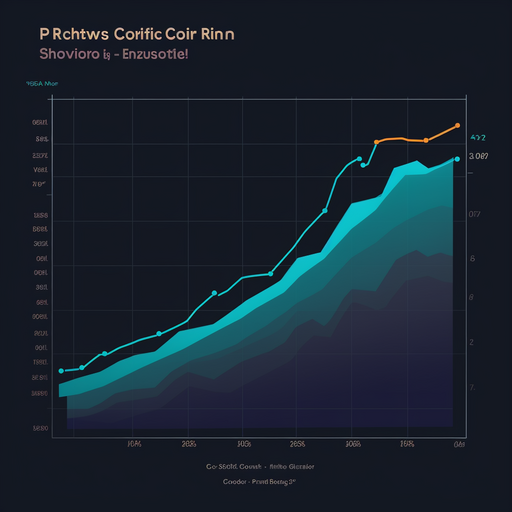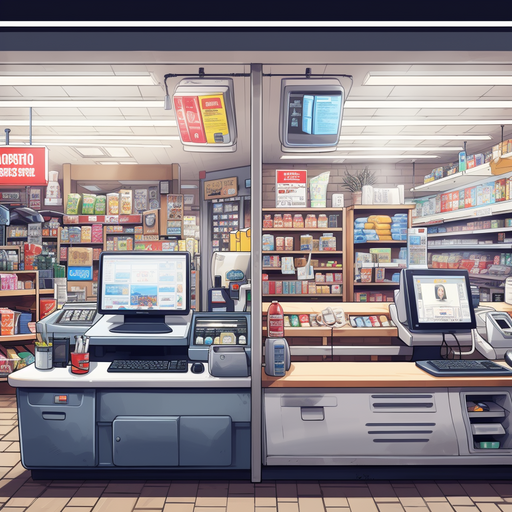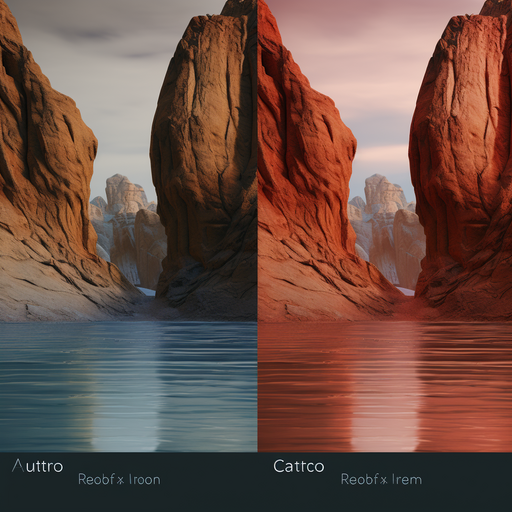In this blog post, we will explore the best CRO (Conversion Rate Optimization) strategies for Shopify Plus, an enterprise-level eCommerce platform, to help online businesses boost their conversion rates and increase revenue. We will delve into proven techniques, industry insights, and expert advice to empower your eCommerce store to reach new heights.
Understanding the Importance of CRO for Shopify Plus
In today's competitive e-commerce landscape, having a visually appealing website and high-quality products is not enough to guarantee success. Conversion rate optimization (CRO) has become a crucial aspect of any successful online store, and Shopify Plus is no exception. CRO refers to the process of improving the user experience on your website to increase the percentage of visitors who take desired actions, such as making a purchase or signing up for a newsletter.
By implementing effective CRO strategies, Shopify Plus merchants can increase their conversion rates and revenue, ultimately leading to long-term success. Understanding the importance of CRO is essential for any merchant looking to optimize their online store's performance and reach their business goals.
CRO is all about understanding your customers, their needs and preferences, and providing them with a seamless shopping experience. It involves analyzing your website's performance and identifying areas where improvements can be made to boost engagement and drive conversions. By optimizing your website's design, layout, and functionality, you can make it easier for customers to find what they're looking for and make a purchase.
In addition to driving sales, CRO can also help improve customer satisfaction and loyalty. By providing a seamless shopping experience, customers are more likely to return to your store and recommend it to others. Effective CRO strategies can also help reduce cart abandonment rates and increase the average order value, leading to increased revenue and profitability.

A graph showcasing the correlation between CRO efforts and revenue growth in Shopify Plus stores
Leveraging High-Quality Product Imagery: Is a Picture Really Worth a Thousand Words?
When it comes to selling products online, high-quality product imagery can make all the difference. In fact, studies show that product images have a significant impact on a customer's decision to buy. This is especially true for e-commerce businesses, where customers cannot physically touch or see products in person.
With Shopify Plus, merchants have the ability to showcase their products through high-quality, visually appealing imagery. This includes using multiple images to show different angles or features of a product, as well as the ability to zoom in and out for a closer look.
In addition to high-quality images, it's also important to consider the context in which they are presented. This includes using lifestyle or contextual images to show the product in use, as well as providing detailed product descriptions and specifications.
However, it's important to strike a balance between quality and quantity. While high-quality images are essential, having too many images or large file sizes can slow down page load times, leading to a poor user experience.
Another important consideration is mobile optimization. With an increasing number of customers shopping on their mobile devices, it's crucial to ensure that product images are optimized for smaller screens and load quickly.
Optimizing Your Store's Checkout Process: Can It Make or Break Your Sales?
The checkout process is a critical component of any e-commerce store, and it can have a significant impact on conversion rates and sales. In fact, studies show that a complicated or confusing checkout process is one of the top reasons customers abandon their shopping carts.
With Shopify Plus, merchants have access to a variety of tools and features to optimize their checkout process and streamline the customer experience. This includes the ability to customize the checkout page, add trust badges and security features, and offer multiple payment and shipping options.
One of the most effective ways to optimize the checkout process is to reduce the number of steps required to complete a purchase. This means minimizing the number of form fields customers need to fill out, as well as simplifying the overall design and layout of the checkout page.
Another important consideration is providing clear and concise instructions throughout the checkout process. This includes highlighting any required fields, providing real-time validation and error messages, and offering clear instructions for entering payment and shipping information.
It's also crucial to ensure that the checkout process is mobile-friendly, as an increasing number of customers are shopping on their mobile devices. This means using responsive design and optimizing page load times for smaller screens.
Finally, it's important to regularly test and optimize the checkout process based on customer feedback and behavior. This includes using tools like A/B testing to experiment with different designs and layouts, as well as regularly reviewing analytics data to identify areas for improvement.

A side-by-side comparison of a cluttered versus a streamlined checkout process
"Keep It Simple, Stupid": The Power of Streamlined Navigation
The navigation of an e-commerce store can make or break the customer experience. If customers can't find what they're looking for quickly and easily, they're likely to become frustrated and abandon their shopping carts. This is why it's crucial for Shopify Plus merchants to focus on streamlined navigation as a key CRO strategy.
- Simplify Your Menu Structure:
One effective way to streamline navigation is to simplify the menu structure. This means reducing the number of menu items and categories, and grouping related products and services together. Ideally, customers should be able to find what they're looking for in just a few clicks, without having to navigate through multiple layers of menus. - Use Clear and Descriptive Labels:
Another important consideration is using clear and descriptive labels for menu items and categories. This means avoiding vague or generic labels like "Products" or "Services" and instead using more specific labels like "Men's Clothing" or "Pet Supplies". Clear labels not only make it easier for customers to find what they're looking for, but they also help improve SEO and search rankings. - Implement Search Functionality:
In addition to a simplified menu structure and clear labels, it's also important to implement search functionality on your e-commerce store. This allows customers to quickly search for specific products or services, without having to navigate through menus or categories. Make sure the search bar is prominently displayed on your site and that it provides accurate and relevant results.
Harnessing the Power of Social Proof: What Do Your Customers Have to Say?
Social proof is a powerful psychological phenomenon that can greatly influence consumer behavior. It's the idea that people are more likely to do something if they see others doing it first. In the context of e-commerce, social proof can be harnessed through customer reviews and testimonials.
Displaying customer reviews prominently on your Shopify Plus store is a great way to build trust and credibility with potential customers. Positive reviews can help overcome any doubts or objections customers may have about making a purchase. To maximize the impact of social proof, it is important to display a mix of positive and negative reviews. This can help increase authenticity and credibility, as customers are more likely to trust reviews that aren't all glowing.
Another way to harness the power of social proof is through user-generated content. This includes things like customer photos and videos, as well as social media posts and mentions. By encouraging customers to share their experiences with your products or services on social media, you can create a buzz and generate interest in your brand. This can also help attract new customers who may not have heard of your brand before.
In addition to customer reviews and user-generated content, Shopify Plus merchants can also leverage influencer marketing as a social proof strategy. By partnering with influencers who have a large following on social media, you can tap into their audience and reach new customers. Influencers can share their experiences with your products or services and provide endorsements that can help build trust and credibility with their followers.

A collage of customer reviews, testimonials, and social media shoutouts praising a Shopify Plus store
Creating Irresistible Offers: How Can You Sweeten the Deal?
In the world of e-commerce, competition is fierce. To stand out and attract customers, it's important to create irresistible offers that sweeten the deal and provide added value to shoppers. Here are some strategies for creating irresistible offers on your Shopify Plus store:
- 1. Bundles and Packages:
One effective way to sweeten the deal is by offering bundles or packages that combine multiple products or services at a discounted price. This can be a great way to incentivize customers to make a larger purchase and can also increase the perceived value of your products or services. For example, if you sell skincare products, you could create a bundle that includes a cleanser, toner, and moisturizer at a discounted price. - 2. Limited-Time Offers:
Another way to create urgency and entice customers to make a purchase is by offering limited-time offers. This could be a discount code that is only valid for a certain period of time, or a special offer that is only available to the first 100 customers who make a purchase. By creating a sense of scarcity, you can motivate customers to act quickly and make a purchase before the offer expires. - 3. Free Gifts and Samples:
People love getting something for free, so offering a free gift or sample with a purchase can be a great way to sweeten the deal and provide added value to customers. For example, if you sell makeup, you could offer a free lipstick or eyeshadow sample with every purchase. This not only provides added value to the customer, but it also gives them an opportunity to try out a new product and potentially make a future purchase.
A/B Testing: Are You Ready to Experiment Your Way to Success?
A/B testing is a powerful tool that can help you optimize your Shopify Plus store and boost conversion rates. By testing different variations of your website, you can identify what works best for your audience and make data-driven decisions to improve your site's performance. Here are some tips for conducting successful A/B tests:
- 1. Identify Your Goals:
Before you start testing, it's important to identify your goals and what you want to achieve. This could be anything from increasing sales to reducing bounce rates. By having a clear goal in mind, you can ensure that your tests are focused and meaningful.2. Test One Variable at a Time:
To get accurate results from your A/B tests, it's important to only test one variable at a time. This could be something like the color of a button or the placement of a call-to-action. By only changing one variable, you can ensure that any changes in performance are directly attributable to that variable. - 3. Analyze Your Results:
Once you've conducted your tests, it's important to analyze your results and draw meaningful insights from the data. Look for statistically significant differences in performance between your control group and your test group. This will help you identify what changes are likely to have the biggest impact on your site's performance.

A split-screen image demonstrating two different design variations being tested for CRO
In conclusion, optimizing your Shopify Plus store's conversion rate is crucial for maximizing revenue and ensuring long-term success. By implementing the strategies discussed in this blog post, you can create a seamless customer experience, build trust, and drive more sales. Stay ahead of the competition by continually testing and refining your CRO efforts, and watch your Shopify Plus store thrive.







